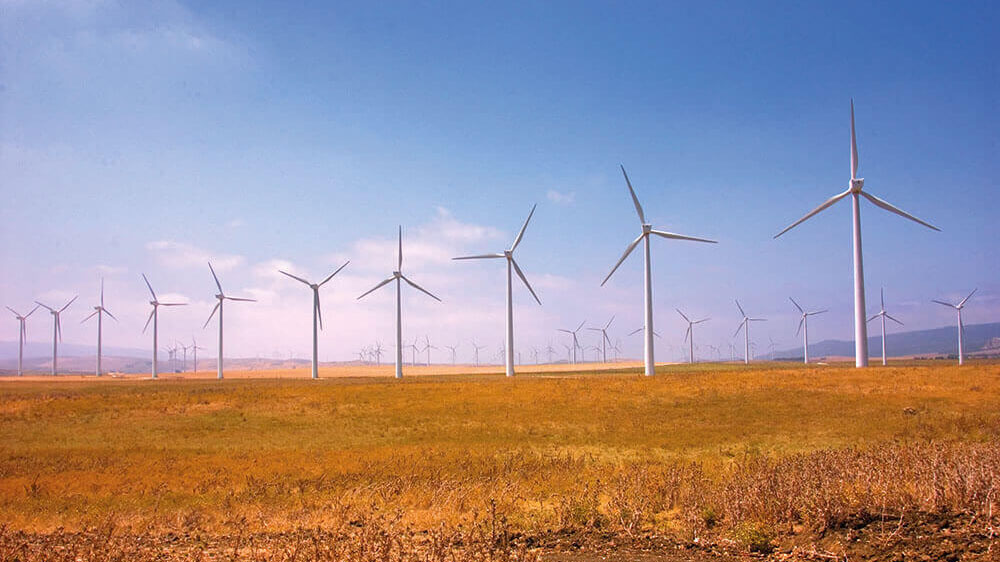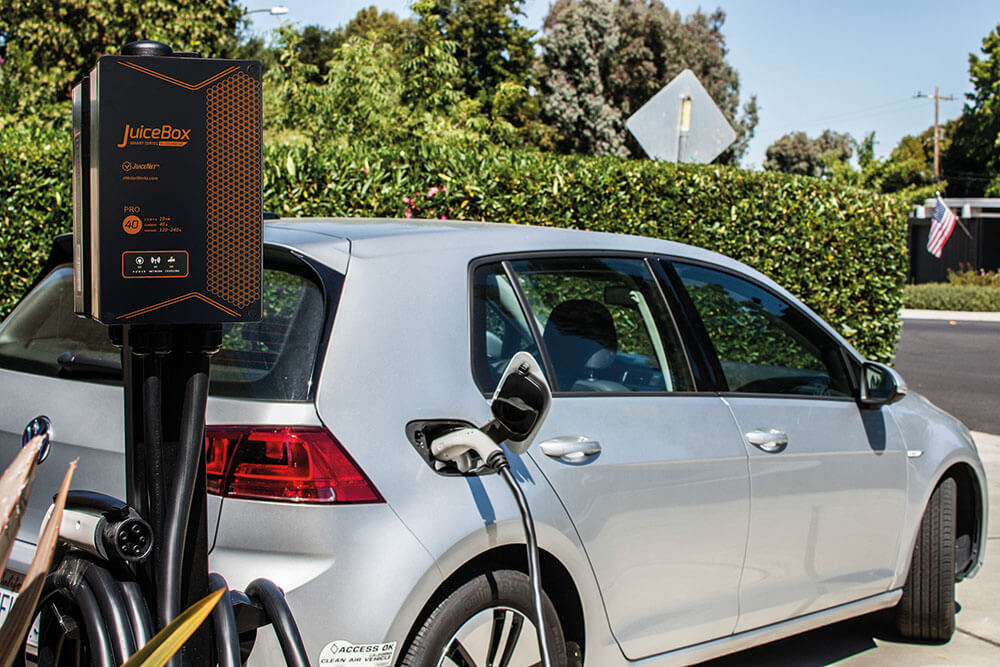… and we aren’t talking about kale smoothies. BV’s RICHARD THOMAS gets out his calculator and tots-up the true environmental cost of powering ‘green’ electric vehicles.
YOU MAY have noticed a vehicular trend emerging in recent issues of BV — cars, bikes, planes and motor racing are all going electric.
This is all being done in the name of Mother Earth, but any conversion to electricity is only as environmentally friendly as the method used to generate it. Even the most efficient green energy sources come with a downside, if not linked to generation, then as a result of the construction of the infrastructure or equipment involved.

The chief global environmental concern these days is climate change, caused by increasing levels of greenhouse gases, CO2 and CH4 (methane) in the atmosphere. One of the aims of electric transport is to cut CO2 generation by reducing the use of fossil fuels. In Norway there are hopes of making all their domestic air traffic electric by 2040. As Dag Falk-Petersen, the CEO of the Norwegian aviation authority, told me: “The Norwegian short-leg domestic network is ideal for trialling the first commercial electric-powered flights”.
In a country where 98 percent of electricity comes from hydropower, that will make a big difference to emissions levels – but most electricity generation around the world still comes from burning coal and gas. If the electricity used to power an electric car is produced from fossil fuels, all you are doing is shifting air pollution and greenhouse gas emissions from where the car is driven to where the electricity was generated. The construction of power stations themselves, using concrete, causes CO2 emissions – and these are invariably large concrete structures.
Coal produces more CO2 per kilowatt hour (kWh) than any other generation method, and it requires huge amounts of water for cooling. The burning process leaves behind large quantities of ash, and the World Health Organisation says air pollution from burning coal is a direct cause of deaths every year. Natural gas (methane, or CH4) is in itself a greenhouse gas, and burning it creates the less potent – but still problematic – CO2. It is cheaper and cleaner than coal, but obviously limited to what naturally occurring resources exist.
Apart from CO2 emissions from the initial construction, nuclear fission generators don’t produce any greenhouse gases during operation. Neither are there issues of air quality, as nothing is burned. The problem is radioactive waste. Most of the waste produced to date is in “long-term temporary” storage facilities around the world, and more permanent storage facilities inside stable rock formations have not yet lived up to expectation. Risk of accidents (think Windscale/Sellafield, Three Mile Island and Fukoshima) and waste disposal problems notwithstanding, nuclear is considered the best “always on” generation method – green energy, at least in terms of CO2 emissions.
Hydro-electric power schemes produce no CO2 as a direct result of generation – but a large amount of concrete is required to build a dam. Water-flow downstream is invariably altered, negatively affecting wildlife and humans, and land upstream of the dam is permanently lost, sometimes requiring the abandonment of entire villages. These factors place a question mark over plans for new hydro projects, but there is no reason to criticise those already in operation. Norway’s almost exclusive use of green energy from hydro generation is doubly good news for its plans for electric domestic aviation.
The Sun is the original source of all energy on Earth, and solar power from photovoltaic panels has been around for decades. Quite a bit of energy is required for the manufacture of the panels, but in operation they are very efficient at turning sunlight into electricity. There are many large solar “farms” with banks of panels turning to follow the sun – a trick science learned from sunflowers. Industrial scale generation can come from concentrated solar power plants, such as the PS20 solar plant at Sanlúcar in southern Spain. An array of mechanised mirrors or “heliostats” follow the Sun and reflect its light and heat to a collection point on a central tower. Heated water produces steam which operates a turbine, generating power like a conventional power station, but green energy in this case. All free, apart from the cost of construction and maintenance.

Wind farms are considered an eyesore by some, as they can be seen for miles – but their ability to convert wind power into electricity makes them popular. A growth area is in offshore wind-power generation, which avoids the “NIMBY” objections. Wave and tidal power have been in the “promising, but more work needed” category for many years. Heading into the 21st Century, real progress is being made. Pilot schemes are reaching the point of commercially viability, but again, these green energy sources bring unintended environmental effects. Barrages, dams and tidal lagoons can greatly affect the flow of water into and out of estuaries, which can have negative effects on fragile ecosystems.
Electricity from biomass is generated by burning crops grown specifically for the purpose. All the CO2 released by burning has been captured from the atmosphere as the crop is growing, but there are emissions from agricultural activity, transport and infrastructure. Pollution is less than from traditional generation methods, and the main problem with biomass is land use — a viable, large-scale source of green energy would require a significant area of land to be taken out of food production.
Geothermal energy comes from heat below the Earth’s crust. It produces no emissions during generation, and for all practical purposes it is inexhaustible. Natural sources of steam deep below the surface are tapped, or holes are drilled into “hot rocks” near the surface. Water is pumped in, and the resulting steam turns turbines. This green energy source is theoretically available all over the world, but the necessary heat is closer to the surface in certain areas, such as Iceland – and so more easily exploited.

Another new concept, developed in the US, is the microgrid. Homes and businesses in a local area can buy and sell electricity from each other according to demand and supply, with transactions secured by blockchain. The company that developed the microgrid, Brooklyn-based LO3 Energy, has teamed up with eMotorWerks, a company that has a network of 6,000 electrical vehicle (EV) charging stations in California. EV owners can choose when to charge their vehicles, depending on the varying supply of cheap electricity. And there is another benefit to this system. Electric cars not in use but connected to eMotorWerks’ JuiceNet make a 30MW “virtual battery” that can be used as online grid storage for solar and wind power to balance demand throughout the day.
Users of the network are asked for permission for their cars to be used in this way – and rewarded by the network if they do. “EV charging adds another option to efficiently match local energy supply and demand, and such a project’s results could open the door to more transactions among other microgrid participants and EV drivers,” said Lawrence Orsini, CEO of LO3 Energy.
One of the major objections to increasing reliance on solar and wind power has always been what do you do when there’s no sun and no wind? Maybe one answer to that objection will be to switch completely from petrol and diesel cars and motorcycles to electric. A controversial viewpoint, not least with the editor of this fine publication, but it will be interesting to see how this one pans out.




























